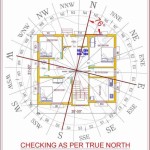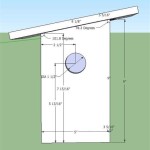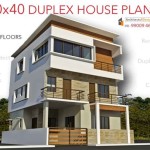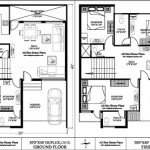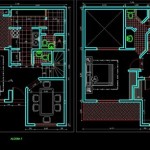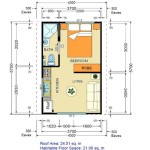Home Design 3D vs. Planner 5D: A Comparative Analysis
Home design software has revolutionized the way individuals and professionals approach interior and exterior planning. These tools offer the ability to visualize concepts, experiment with different layouts, and create detailed blueprints before committing to physical construction or renovation. Two prominent contenders in this market are Home Design 3D and Planner 5D, each boasting a range of features designed to simplify and enhance the design process. This article provides a comprehensive comparison of these two software options, exploring their functionalities, ease of use, pricing structures, and overall suitability for various design needs.
Both Home Design 3D and Planner 5D provide users with the capability to create 2D and 3D floor plans. These plans serve as the foundation for any design project, allowing users to accurately represent the dimensions and spatial arrangement of rooms and structures. The software typically offers a drag-and-drop interface, enabling users to easily add walls, doors, windows, and other architectural elements. Furthermore, both programs allow for customization of these elements, including adjusting their size, shape, and position. The ability to switch between 2D and 3D views is crucial for understanding the overall layout and visualizing the potential impact of design choices.
The availability of object libraries is another critical factor in evaluating home design software. These libraries contain a wide array of furniture, appliances, decor, and other items that can be incorporated into the design. The richness and variety of the object library directly impact the realism and accuracy of the rendered design. Users can browse through categories, search for specific items, and customize their appearance using various textures and colors. The integration of these objects into the floor plan allows users to visualize the finished space and make informed decisions about furniture placement and overall design aesthetics.
Beyond basic floor plan creation and object placement, advanced features such as rendering capabilities, material customization, and collaboration tools play a significant role in the overall user experience. High-quality rendering allows users to create photorealistic images and videos of their designs, providing a clear understanding of the finished product. Material customization enables users to apply different textures, colors, and finishes to surfaces, enhancing the realism and visual appeal. Collaboration tools facilitate teamwork by allowing multiple users to access and edit the same project simultaneously. These features are particularly beneficial for professional designers who need to present their ideas to clients or collaborate with other members of a design team.
Ease of Use and User Interface
The user interface and overall ease of use are crucial considerations when selecting home design software. A well-designed interface allows users to quickly learn the software and efficiently navigate its features. Factors such as intuitive menus, clear icons, and helpful tutorials contribute to a positive user experience. The learning curve associated with each software program can vary depending on the user's prior experience with design software and their level of technical proficiency. A more user-friendly program will typically require less time and effort to master, allowing users to focus on the creative aspects of design rather than struggling with the software itself.
Home Design 3D generally presents a streamlined and relatively intuitive interface, particularly suitable for beginners. The drag-and-drop functionality is straightforward, and the menus are logically organized. However, the level of customization options might be perceived as somewhat limited compared to Planner 5D. The program offers a range of tutorials and help resources to guide users through the basics of floor plan creation and object placement.
Planner 5D, on the other hand, leans towards a more robust feature set with a slightly steeper learning curve. The interface can feel more complex initially, but it offers greater flexibility and customization options for experienced users. The software provides a comprehensive suite of tools for creating detailed floor plans, customizing materials, and rendering high-quality images. Planner 5D also offers a collaborative platform, allowing multiple users to work on the same project simultaneously. The initial investment in learning the software may be higher, but the potential for creating sophisticated and realistic designs is significant.
The choice between the two often depends on the user's level of experience and design goals. If the primary objective is to quickly create basic floor plans and visualize furniture arrangements, Home Design 3D might be the more suitable choice. However, if the user requires advanced customization options, high-quality rendering capabilities, and collaborative features, Planner 5D could be the preferred option.
Feature Set and Functionality
The range of features offered by home design software is a critical differentiator. The core functionalities, such as floor plan creation and object placement, are generally present in both Home Design 3D and Planner 5D. However, the depth and breadth of these features can vary significantly. Advanced features, such as material customization, rendering capabilities, landscape design tools, and collaboration options, can significantly enhance the design process and open up new possibilities for creative expression.
Home Design 3D offers a solid foundation for basic home design tasks. The software includes a range of tools for creating floor plans, adding furniture, and visualizing the overall layout. The object library is reasonably extensive, offering a variety of furniture, appliances, and decor items. However, the customization options might be somewhat limited compared to other software programs. Rendering capabilities are present, but the quality might not be as high as that offered by Planner 5D.
Planner 5D distinguishes itself with a more comprehensive and feature-rich environment. The software offers a wide array of customization options, allowing users to adjust the appearance of materials, furniture, and other objects. The rendering engine is capable of producing high-quality images and videos, providing a realistic representation of the finished design. Planner 5D also includes tools for landscape design, allowing users to create outdoor spaces and integrate them seamlessly with the interior design. The collaboration features enable multiple users to work on the same project simultaneously, making it a suitable choice for design teams.
Further differentiating Planner 5D is its AI-driven design assistance. While not foolproof, this feature offers automated suggestions for room layouts and furniture arrangements based on user-defined parameters. This can be a helpful tool for users lacking design experience or those seeking inspiration.
The availability of cloud storage and cross-platform compatibility are also important considerations. Both Home Design 3D and Planner 5D offer cloud storage options, allowing users to access their projects from different devices. The ability to work on a design project on a tablet, computer, or smartphone provides greater flexibility and convenience. Cross-platform compatibility ensures that the software can be used on different operating systems, such as Windows, macOS, iOS, and Android.
Pricing and Subscription Models
The pricing structure is a crucial factor in determining the overall value of home design software. Subscription models, one-time purchases, and in-app purchases can all influence the total cost of ownership. It is important to carefully evaluate the features offered at each price point and determine whether they align with the user's design needs and budget.
Home Design 3D typically offers a tiered pricing model, with varying levels of features and functionality available at different price points. A free version with limited features may be available for users who want to try the software before committing to a purchase. Paid versions unlock additional features, such as access to a larger object library, advanced rendering capabilities, and the ability to export designs in different formats. The specific pricing structure may vary depending on the platform and region.
Planner 5D also employs a subscription-based model, with monthly, annual, and lifetime subscription options. The free version provides basic functionality, allowing users to create floor plans and add furniture. Paid subscriptions unlock premium features, such as access to the full object library, high-quality rendering, and collaboration tools. The cost of a Planner 5D subscription can vary depending on the duration of the subscription and the features included.
In-app purchases can also contribute to the overall cost. Both Home Design 3D and Planner 5D may offer additional object libraries, textures, or other design elements for purchase within the app. Users should carefully consider whether these additions are necessary for their design projects and factor them into the overall cost.
The long-term cost of ownership is an important consideration when evaluating pricing models. A one-time purchase may seem more appealing initially, but it may not include updates or access to new features in the future. A subscription model, on the other hand, typically includes ongoing updates and access to the latest features, but it requires a recurring payment.
Ultimately, the choice between Home Design 3D and Planner 5D depends on the user's individual needs, budget, and technical expertise. Home Design 3D offers a more accessible and user-friendly experience for beginners, while Planner 5D provides a more comprehensive and feature-rich environment for experienced designers. The pricing structure should be carefully evaluated to ensure that the features offered align with the user's design goals and budget.

Create Your Dream Home Now Planner5d

Planner 5d Features Of The Year

Home Design Planner 5d

The Best Home Design For Interior In 2024

Planner 5d Vs Floorplanner In Depth Comparison Guide

Planner 5d Vs Roomsketcher

Best For Home Design

Create Your Dream Home Now Planner5d

Create Your Dream Home Now Planner5d

Newsroom Planner 5d

